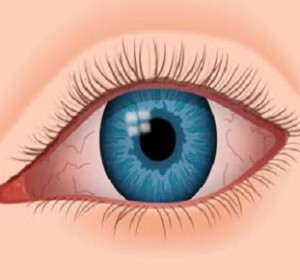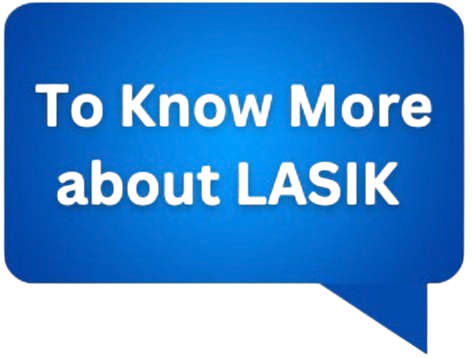Dry eyes are a common condition where the eyes do not produce enough tears or when the tears evaporate too quickly. This leads to irritation, burning sensation, redness, and blurred vision. While it may seem like a minor problem, untreated dry eye can affect daily activities like reading, driving, or using digital devices. Modern eye care facilities, such as Vision Eye Centre, provide advanced solutions for people looking for safe and effective Dry Eye treatment in Delhi.
What is Dry Eye Disease?
Dry Eye Disease, also known as keratoconjunctivitis sicca, occurs when the eyes fail to maintain the right balance of tear production and drainage. Tears are essential for clear vision, eye comfort, and protection against infections. When this balance is disrupted, patients may experience itching, burning, or even excessive tearing as a response to dryness.
This condition is more common with age, prolonged screen use, certain medications, or underlying health issues. Many patients seek dry eye syndrome treatment in Delhi to get relief and restore comfort.
Causes of Dry Eye
Dry eye is not caused by a single factor—it usually happens due to a combination of medical, lifestyle, and environmental reasons. Understanding the underlying cause is important for planning the right dry eye treatment in Delhi. Below are the major causes explained in detail:
1. Aging Process
With age, the tear glands slow down and produce fewer tears. People over 50 are more prone to dry eye because the natural tear film becomes thinner and less stable.
2. Hormonal Changes
Women often experience dry eye during pregnancy, menopause, or due to birth control pills. Hormonal imbalance affects tear production, making women more vulnerable.
3. Excessive Screen Time
Using laptops, mobiles, or TVs for long hours reduces blinking. Fewer blinks cause tears to evaporate quickly, leaving the eyes dry and strained.
4. Environmental Factors
Pollution, dust, smoke, wind, and constant exposure to air conditioning or heating systems can disturb the tear film. These conditions accelerate tear evaporation.
5. Medical Conditions
Diseases like diabetes, thyroid disorders, arthritis, and Sjögren’s syndrome are strongly linked to dry eye. Chronic eyelid inflammation (blepharitis) also worsens the problem.
6. Medications
Common medicines such as antihistamines, antidepressants, and blood pressure drugs can reduce tear production. Long-term use often increases dryness.
Treatment Options for Dry Eye
Dry eye can usually be managed with the right treatment, depending on its cause and severity. Eye specialists first identify the underlying reason and then suggest the most suitable plan. Common dry eye treatment in Delhi includes:
-
Artificial Tears and Lubricating Drops: These provide instant relief by moisturizing the eyes.
-
Prescription Eye Drops: Medicines that help improve tear production or reduce inflammation.
-
Warm Compress and Eyelid Hygiene: Useful for people with blepharitis or meibomian gland dysfunction.
-
Punctal Plugs: Tiny devices inserted into tear ducts to slow down tear drainage.
-
Nutritional Supplements: Omega-3 fatty acids and Vitamin A support better tear quality.
-
Lifestyle Changes: Limiting screen time, using humidifiers, and protecting eyes from pollution help reduce symptoms.
Many patients in Delhi prefer advanced dry eye syndrome treatment in Delhi offered at specialized centers for long-lasting relief.
Dry Eye Treatment Procedure
When home remedies and basic drops are not enough, doctors may suggest advanced procedures for lasting results. A typical dry eye treatment procedure includes:
-
Diagnosis: The doctor performs tests to measure tear production, tear film stability, and eye surface health.
-
Customized Plan: Treatment is based on whether the problem is due to poor tear production or quick tear evaporation.
-
Office Procedures:
-
Punctal Occlusion: Inserting tiny plugs into tear ducts to retain tears.
-
LipiFlow Therapy: A device that gently warms and massages eyelids to open blocked glands.
-
Intense Pulsed Light (IPL): Reduces inflammation and improves oil secretion in tears.
-
-
Follow-Up Care: Regular monitoring ensures the treatment remains effective.
These modern techniques ensure that patients not only get temporary relief but also long-term improvement in eye comfort.
Benefits of Dry Eye Treatment
Timely treatment for dry eye not only relieves discomfort but also prevents long-term damage to the eyes. Patients who undergo dry eye treatment in Delhi experience multiple benefits such as:
-
Improved Comfort: Reduces burning, itching, and redness, making daily activities easier.
-
Clearer Vision: Stable tear film ensures sharper, more consistent vision.
-
Better Focus: Relief from irritation allows patients to concentrate better on work and reading.
-
Reduced Risk of Infection: Adequate tears protect the eyes from harmful bacteria and dust.
-
Enhanced Quality of Life: Comfort in using digital devices, driving, or spending time outdoors improves overall well-being.
These advantages highlight why dry eye should not be ignored and why early treatment is always beneficial.
Why Choose Vision Eye Centre for Dry Eye Treatment in Delhi?
When it comes to reliable and advanced dry eye treatment in Delhi, Vision Eye Centre stands out for its expertise and patient-focused approach. The centre is equipped with modern diagnostic tools and advanced therapies such as LipiFlow, IPL treatment, and punctal plugs, ensuring that every patient receives precise care tailored to their condition.
What makes Vision Eye Centre unique is its commitment to long-term results and patient comfort. Instead of only offering temporary relief, specialists design personalized treatment plans that focus on restoring eye health and preventing recurrence.
Frequently Asked Questions
1. What is the main cause of dry eye?
Dry eye is usually caused by reduced tear production or faster evaporation of tears. Common triggers include aging, screen overuse, pollution, medical conditions, and some medications.
2. Is dry eye a permanent condition?
Not always. Mild cases can be managed with artificial tears and lifestyle changes. Severe or chronic cases may require advanced treatments, which provide long-term relief.
3. How is dry eye diagnosed?
Eye specialists use tests to measure tear quantity and quality, check tear film stability, and examine the eye surface. Vision Eye Centre uses advanced diagnostic tools for accurate results.
4. What are the best treatments for dry eye?
Treatment ranges from eye drops and nutritional supplements to advanced therapies like LipiFlow, punctal plugs, and IPL, depending on the severity of the condition.
5. Can dry eye damage vision if left untreated?
Yes. If ignored, dry eye can cause constant irritation, blurry vision, eye infections, and in rare cases, damage to the cornea. Early treatment is strongly recommended.
6. Is dry eye common among people using computers and mobiles?
Yes. Prolonged screen time reduces blinking, which leads to quick tear evaporation. That’s why many office workers and students suffer from digital-related dry eye.
7. How long does dry eye treatment take to show results?
Relief from irritation may start within days, but complete improvement can take a few weeks depending on the treatment type and the severity of the condition.
For more information about Dry Eye Treatment in Delhi: Vision Eye Centre, please call at
(+91)-9711004422 or click here for free advice.


